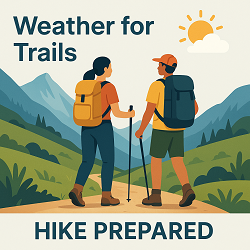Aspen, CO Weather Forecast and Current Conditions
Current Conditions From Nearby Local Station

Feels Like 35°F
at
Point Forecast at a Glance







7-Day Temperature Trend
Week Ahead Summary
Cooling trend continues with high temperatures dropping from 48°F to 31°F. Unsettled weather expected with wintry mix likely on at least 6 days.
Climate Context
This week's forecast shows temperatures running 1°F above the historical average for November. Normal highs for this period are around 42°F with lows around 16°F.
This Date in Weather History
1914 - The high temperature of 28 degrees at Atlanta, GA, was their earliest daily high below the freezing mark.
Aspen, CO 7 Day Weather Forecast Details
Thursday Nov 20

Day: Cloudy with Numerous Light Wintry Mix and Isolated Thunderstorms with a high near 48 F. Winds from the ESE at 5 mph. Chance of precipitation is 70%

Night: Mostly Cloudy with Numerous Light Wintry Mix with a low near 28 F. Winds from the W at 4 mph. Chance of precipitation is 60%
Friday Nov 21

Day: Mostly Cloudy with Light Wintry Mix with a high near 44 F. Winds from the W at 2 mph. Chance of precipitation is 50%

Night: Partly Cloudy with Snow Showers with a low near 22 F. Winds from the SSW at 2 mph. Chance of precipitation is 10%
Saturday Nov 22

Day: Mostly Sunny with a high near 49 F. Winds from the SSE at 4 mph

Night: Partly Cloudy with a low near 26 F. Winds from the S at 4 mph
Sunday Nov 23

Day: Partly Cloudy with Chance of Light Wintry Mix with a high near 46 F. Winds from the ESE at 3 mph. Chance of precipitation is 30%

Night: Partly Cloudy with Light Wintry Mix with a low near 25 F. Winds from the NW at 4 mph. Chance of precipitation is 40%
Monday Nov 24

Day: Partly Cloudy with Light Wintry Mix with a high near 44 F. Winds from the W at 5 mph. Chance of precipitation is 40%

Night: Mostly Clear with Slight Chance of Light Snow Showers with a low near 19 F. Winds from the W at 5 mph. Chance of precipitation is 10%
Tuesday Nov 25

Day: Partly Cloudy with Slight Chance of Light Snow Showers with a high near 40 F. Winds from the S at 6 mph. Chance of precipitation is 20%

Night: Partly Cloudy with Slight Chance of Light Snow Showers with a low near 13 F. Winds from the W at 5 mph. Chance of precipitation is 20%
Wednesday Nov 26

Day: Partly Cloudy with Slight Chance of Light Snow Showers with a high near 31 F. Winds from the SSW at 4 mph. Chance of precipitation is 10%

Night: Partly Cloudy with Slight Chance of Light Snow Showers with a low near 21 F. Winds from the WSW at 6 mph. Chance of precipitation is 10%
Thursday Nov 27

Day: Mostly Cloudy with Slight Chance of Light Snow Showers with a high near 34 F. Winds from the SW at 5 mph. Chance of precipitation is 10%

Night: Partly Cloudy with a low near 19 F. Winds from the W at 6 mph
Friday Nov 28

Day: Partly Cloudy with a high near 34 F. Winds from the SSW at 4 mph

Night: Partly Cloudy with a low near 19 F. Winds from the SW at 5 mph
Saturday Nov 29

Day: Partly Cloudy with Snow Showers with a high near 36 F. Winds from the S at 6 mph. Chance of precipitation is 20%

Night: Mostly Cloudy with Snow Showers with a low near 21 F. Winds from the SW at 7 mph. Chance of precipitation is 20%
About Aspen, CO
Content from Wikipedia, licensed under CC BY-SA 3.0.
How We Provide Better Local Weather
Current conditions: We use the nearest available station to your location - including professional MESONET/MADIS and local weather stations - often miles closer than regional airports.
Forecasts: National Weather Service point forecasts predict for your specific area, not broad regional zones, making them far more relevant to your location.



